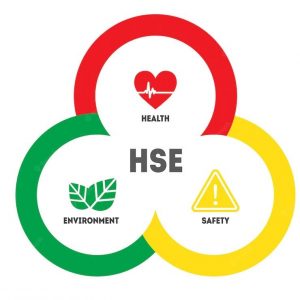Significance of Environmental Compliance Audit (ECA)
- October 27, 2022
- Posted by: Velosi Author
- Categories: HSE, Insights

What is an Environmental Compliance Audit?
Have you ever thought about why Environmental Audits are conducted? An environmental compliance audit is a systematic and independent examination of an organization’s activities to determine if they comply with environmental regulations. These audits are conducted by qualified professionals to ensure that the organizations/facility they work for is compliant with the law. They are usually conducted in response to a government request or as part of a regular assessment and can be either internal or external.
In other words, it is an audit performed to verify that the company complies with all the necessary regulations. An oversight process that helps ensure that a company/facility meets all necessary regulatory requirements. Most importantly, this type of audit should be considered by all organizations, as it can help prevent fines and penalties, hazardous accidents, and sometimes even lawsuits.
The Purpose of an Environmental Compliance Audit?
As Environmental Compliance Audit (ECA) is the process of evaluating an organization’s compliance with environmental regulations. They are often conducted by external auditors who have been contracted by the organization. The audit may also be conducted by employees of the organization, who can be internal auditors or environmental specialists, depending upon the specific requirements.
There are many reasons why an environmental compliance audit may be needed. A company may need to satisfy a regulator that they are meeting their obligations, or they might want to identify and fix any non-compliance issues before they get caught out.
Who Conducts an Environmental Compliance Audit?
Environmental compliance auditing is a process of evaluating the environmental sustainability performance of an organization/facility.
It can be performed internally by an in-house team, or externally by a third-party auditor. A number of reasons exist for selecting a third-party auditor including cost and time savings and the opportunity to have an independent opinion on progress with corporate environmental compliance objectives.
Environmental compliance auditing is becoming increasingly vital to organizations looking to mitigate their environmental risk exposure and move towards sustainable practices.
What are the Benefits of a Regular Environmental Compliance Audit?
Auditing the environment is a part of a business’s due diligence. It helps them to identify any potential environmental issues.
The most effective benefits of an environmental compliance audit
- Providing information on past events
- Identifying potential dangers and risks, and detecting violations.
- Marks a secure environment for the organization/facility and its employees.
- Maintains compliance with applicable laws.
- Environmentally friendly.
- Reducing the costs associated with waste, water, and energy.
What are the Major Components of an ECA?
The major components of an ECA are:
1. The scope of the audit is the most important component. It defines what will be audited and what won’t be audited.
2. The auditor, is responsible for planning and executing the audit. This person should have a good knowledge of the organization and its industry so that they can identify potential risks in advance.
3. The assessment process, which includes how to assess risk and vulnerability as well as how to carry out the audit itself.
4. The report or summary of findings generated by the auditor after completing the audit process.
Environmental audits can be divided into two main categories:
1. Environmental Compliance Audit (External)
An environmental audit of this type is considered the most comprehensive since it includes an examination of the legal compliance status of the construction site or company.
2. Environmental Management Audit (Internal)
The organization or management conducts internal audits to understand how it is performing in terms of its environmental performance objectives.
How to Conduct a Successful ECA?
The first step in conducting an EC audit is to identify the scope of the audit and what needs to be audited. The scope of the audit can be defined by a company’s management or it can be based on an external requirement. Once the scope has been identified, a time frame for conducting the EC audit should also be determined.
Moreover, an EC audit can help companies identify risks and opportunities that may exist in their supply chain, contributing to sustainability. This will enable them to take appropriate measures before they face any crucial problems. An EC assessment is not just about identifying risks and opportunities in a company’s supply chain, but it is also about finding ways to mitigate and eliminate risks and opportunities as well as implementing changes that will improve a company’s performance on social, environmental, and economic fronts.
Regularly Conducting an Environment Audit Can Help Reduce Risk for Your Business
To conclude, Environmental audits can be an important tool for businesses to monitor and manage their environmental risks. They help identify potential problems, such as a leaking pipe or chemical spill before they develop into any major issues.
An environmental audit should be conducted at least once per year to avoid major incidents. This will allow you to spot any small issues before they become big ones. You will also have time to fix the problem before it becomes a costly burden.
Velosi offers masterful Environmental Compliance Audit solutions to private and government organizations to assist them to ensure the proper functioning of environmental management systems (EMS) and identifying any compliance issues, enhancing the organization’s overall productivity.
Please contact us for more information and assistance.



